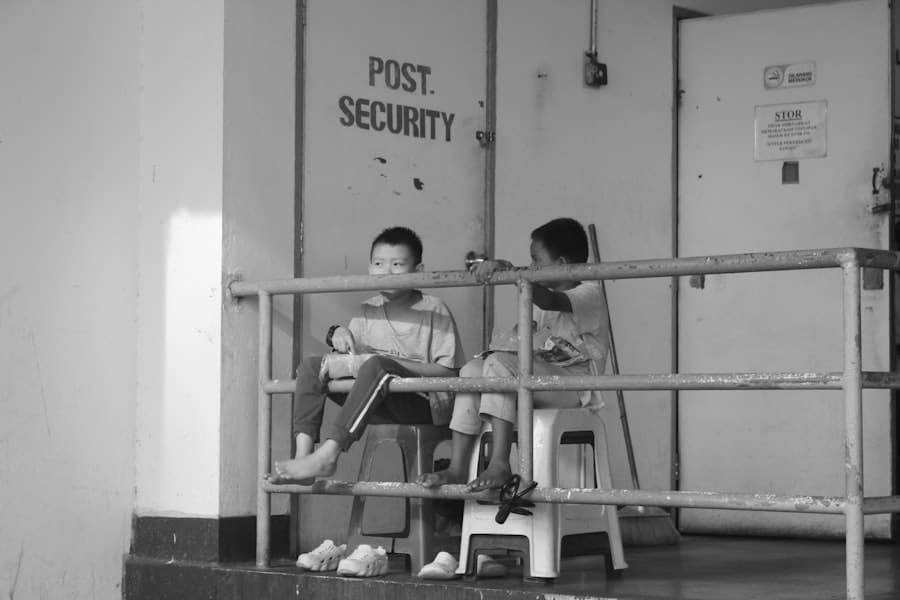In the digital age, children are increasingly exposed to a myriad of online risks that can have serious implications for their safety and well-being. The internet, while a treasure trove of information and entertainment, also harbors dangers such as cyberbullying, inappropriate content, and online predators. Children may inadvertently share personal information or engage with strangers who may not have their best interests at heart.
The anonymity of the internet can embolden individuals to act in harmful ways, making it crucial for parents and guardians to understand these risks thoroughly. Moreover, the psychological impact of online interactions cannot be overlooked. Children may experience anxiety, depression, or low self-esteem as a result of negative online experiences.
The prevalence of social media platforms can exacerbate these feelings, as children often compare themselves to their peers based on curated online personas. Understanding these risks is the first step in creating a safe online environment for children. Parents must remain vigilant and proactive in educating themselves about the evolving landscape of digital threats, ensuring they can effectively guide their children through the complexities of online interactions.
Key Takeaways
- Understanding the Risks: Parents should be aware of the potential dangers of online activity, including cyberbullying, exposure to inappropriate content, and privacy breaches.
- Setting Privacy Settings: It is important to regularly review and adjust privacy settings on social media accounts and other online platforms to limit the sharing of personal information.
- Teaching Children about Online Safety: Parents should have open and ongoing conversations with their children about the importance of online safety, including the risks and how to stay safe.
- Monitoring Online Activity: Parents should regularly monitor their children’s online activity and be aware of the websites they visit, the apps they use, and the people they interact with.
- Limiting Sharing of Personal Information: Children should be taught to be cautious about sharing personal information online, including their full name, address, school, and contact details.
Setting Privacy Settings
One of the most effective ways to safeguard children online is by setting appropriate privacy settings on devices and social media accounts. Most platforms offer a range of privacy options that allow users to control who can see their information and interact with them. For instance, on platforms like Facebook and Instagram, parents can help their children adjust settings to limit visibility to friends only, thereby reducing the risk of unwanted contact from strangers.
Additionally, disabling location sharing features can prevent others from tracking a child’s whereabouts. It is also essential to regularly review these privacy settings, as platforms frequently update their policies and features. Engaging children in this process not only empowers them but also fosters a sense of responsibility regarding their online presence.
By teaching them how to navigate privacy settings, parents can instill a habit of regularly checking and updating these controls as needed. This proactive approach helps create a safer online environment and encourages children to be mindful of their digital footprint.
Teaching Children about Online Safety

Educating children about online safety is paramount in equipping them with the skills necessary to navigate the digital world responsibly. This education should begin at an early age and be an ongoing conversation rather than a one-time discussion. Parents can introduce concepts such as recognizing suspicious behavior, understanding the importance of strong passwords, and knowing when to seek help if they encounter something uncomfortable online.
Role-playing scenarios can be an effective method for teaching these skills, allowing children to practice responding to various situations in a safe environment. Furthermore, it is crucial to emphasize the importance of critical thinking when consuming online content. Children should be taught to question the credibility of sources and recognize misinformation.
Encouraging them to discuss what they see online can foster open communication and help parents gauge their understanding of online safety issues. By creating an atmosphere where children feel comfortable discussing their online experiences, parents can better support them in navigating potential dangers.
Monitoring Online Activity
While fostering independence is important for children’s development, monitoring their online activity is equally essential for ensuring their safety. Parents can utilize various tools and software designed to track internet usage and provide insights into children’s online behavior. These tools can alert parents to potentially harmful interactions or content, allowing them to intervene when necessary.
However, it is vital that this monitoring is balanced with trust; children should understand that it is not about invading their privacy but rather about keeping them safe. In addition to using monitoring tools, parents should engage in regular discussions about their children’s online activities. Asking open-ended questions about what they enjoy doing online or who they interact with can provide valuable insights into their digital lives.
This dialogue not only helps parents stay informed but also reinforces the idea that children can come to them with any concerns or issues they may encounter online. By maintaining an open line of communication, parents can create a supportive environment that encourages responsible internet use.
Limiting Sharing of Personal Information
One of the most critical aspects of online safety is teaching children the importance of limiting the sharing of personal information. Children often do not fully grasp the implications of sharing details such as their full name, address, phone number, or school on public platforms. Parents should explain why this information should remain private and the potential consequences of oversharing.
For instance, sharing personal details can lead to unwanted attention from strangers or even identity theft. To reinforce this lesson, parents can establish clear guidelines regarding what information is acceptable to share online. Creating a checklist or a set of rules can serve as a helpful reference for children when they are unsure about whether to share something.
Additionally, discussing real-life examples of situations where oversharing led to negative outcomes can make the concept more tangible for children. By instilling a sense of caution regarding personal information, parents can help children develop healthy online habits that prioritize their safety.
Using Child-Friendly Search Engines and Apps

In an effort to create a safer online experience for children, utilizing child-friendly search engines and applications is an effective strategy. These platforms are designed specifically for younger users, filtering out inappropriate content and providing a more controlled browsing environment. For example, search engines like KidzSearch or Kiddle offer child-safe search results that exclude adult material while still providing access to educational resources and entertainment suitable for kids.
In addition to search engines, there are numerous apps tailored for children’s use that prioritize safety and educational value. Apps like ABCmouse or Khan Academy Kids offer engaging learning experiences without exposing children to harmful content or interactions with strangers.
Furthermore, encouraging children to explore these platforms together can foster shared learning experiences and strengthen parent-child bonds.
Educating Children about Cyberbullying
Cyberbullying has become an alarming issue in today’s digital landscape, making it imperative for parents to educate their children about its signs and consequences. Children should be made aware that bullying can occur not only in person but also through text messages, social media posts, and other online interactions. Teaching them how to recognize cyberbullying—such as receiving hurtful messages or being excluded from online groups—can empower them to take action if they find themselves or someone else in such situations.
Moreover, it is essential for parents to discuss strategies for dealing with cyberbullying effectively. Children should know that they can report abusive behavior on most platforms and that they should never hesitate to reach out for help from trusted adults if they feel threatened or uncomfortable. Role-playing scenarios where children practice responding to cyberbullying situations can also be beneficial in preparing them for real-life encounters.
By fostering resilience and encouraging open communication about these issues, parents can help children navigate the complexities of online interactions with confidence.
Seeking Professional Help if Needed
Despite best efforts in educating and monitoring children’s online activities, there may be instances where professional help becomes necessary. If a child exhibits signs of distress related to their online experiences—such as withdrawal from social activities, changes in mood or behavior, or difficulty sleeping—parents should consider seeking guidance from mental health professionals who specialize in child psychology or cyber-related issues. These experts can provide valuable insights into coping strategies and therapeutic approaches tailored to the child’s needs.
Parents should not hesitate to reach out for help when they feel overwhelmed or uncertain about how to handle specific challenges related to their child’s online safety. By recognizing when professional intervention is necessary, parents can ensure that their children receive the support they need to navigate the complexities of the digital world safely and healthily.
In today’s digital age, protecting children’s privacy in online spaces is more crucial than ever. As parents and guardians strive to safeguard their children’s personal information, it’s essential to stay informed about the latest tools and strategies. A related article that can provide further insights into managing digital environments is


